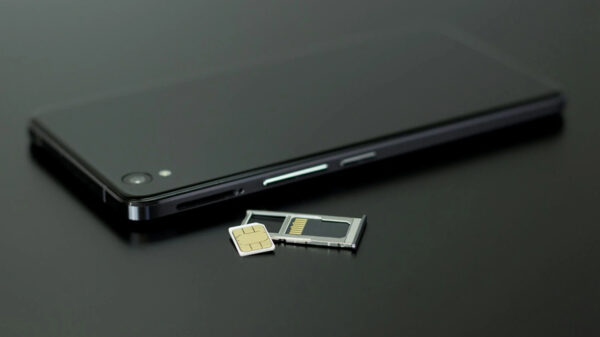PLDT and its wireless subsidiary Smart Communications, Inc. (Smart) have accelerated the rollout of the group’s fixed and wireless networks, boosting data speeds and company revenues in the first half of the year.
As of end-June, Smart has installed more than 3,900 LTE base stations, increasing the total count by 45% to over 12,600, and enabling Smart to improve its Long Term Evolution (LTE) coverage, as well as to activate LTE-Advanced (LTE-A), which offers even higher data speeds and capacity.
Aside from rolling out LTE and LTE-A across the country’s main urban hub Metro Manila, Smart has also successfully fired up LTE and LTE-A as far north as Batanes, Sagada and Cagayan, as well as in Palawan, Sorsogon, Cebu, Bohol, Leyte, Davao and Sarangani, to name a few.
With this rollout, Smart is on track to fulfill its commitment to the National Telecommunications Commission to provide high-speed wireless data services in over 90% of the country’s cities and municipalities by the end of 2018.
As of end-June, PLDT has likewise increased the coverage of its fiber-power fixed broadband network to 5.07 million homes passed and boosted its capacity to 1.86 million ports, nearing its full-year target of 2.2 million ports.
Underpinning PLDT and Smart’s fixed and mobile network roll-out was the expansion of PLDT’s fiber optic transmission and distribution network. In the first half of 2018, PLDT increased its fiber footprint to 204,000 kilometers, rolling out over 29,000 kilometers of fiber cable further increasing the reach, capacity and resiliency of PLDT’s fiber network. These expansion projects greatly enhance Smart’s mobile network by providing high-capacity fiber connections for LTE base stations.
With its extensive fiber coverage, PLDT is transforming entire areas into fiber-enabled “Smart cities”. Toledo City, Cebu was the first to roll out full coverage of fiber-to-the-home in the area, followed by General Santos City in Mindanao, Naga in the Bicol Region, and South Metro Manila which includes Paranaque and Las Piñas, East Metro Manila which includes Pasig and Antipolo, and central business districts like Rockwell Makati and Bonifacio Global City. Cavite became the first “Smart province” late last year.
Recently, PLDT rolled out fiber in the tourist town of El Nido in Palawan with future plans of expanding to other municipalities to benefit residents, local businesses and industries, and the growing number of tourists visiting the island.
Fiber has also been rolled out in the Metro Manila cities of Pasay, Marikina, Taguig and Caloocan; in Northern and Central Luzon areas like Laoag, Baguio, Vigan, Tuguegarao, Tarlac, Cabanatuan and San Fernando; Southern Luzon areas like Laguna, Puerto Princesa, Sorsogon and Legazpi; and in Davao, South Cotabato, Cotabato, Koronadal, Zamboanga, Sarangani and Sultan Kudarat.
“The beneficial impact of these network roll-out efforts has been enhanced by the tighter coordination between our business and network organizations, and, between the fixed and mobile engineering teams,” said Mario G. Tamayo, Senior Vice President for network planning and engineering for PLDT and Smart. “As a result, we are prioritizing the roll-out in areas where there are ready customers. Also, our deployment of network facilities – particularly fiber – more efficiently boost the expansion efforts of both our fixed and mobile network.”
Data/broadband and digital services continued to be the main growth drivers for all three business segments Home, Individual Wireless, and Enterprise accounting for P39.6 billion in revenues, 54% of 1st half 2018 total service revenues.
“We have crossed an important threshold now that our data and digital services generate more than half of our total service revenues. Moving forward, our task is to accelerate our digital pivot by pursuing whenever possible converged digital initiatives across our business segments – Home, Individual Wireless, and Enterprise,” said Ernesto R. Alberto, Executive Vice President and Chief Revenue Officer.
Fastest network in the Philippines
As a result of network transformation efforts, PLDT and Smart were recently cited for being the country’s fastest fixed and mobile networks for Q1-Q2 2018, respectively, by Ookla, the global leader in internet testing and analysis.
Earlier this year, independent mobile analytics company OpenSignal also cited Smart for being the fastest in the Philippines, with nationwide LTE download speeds of 12.5 Mbps, ahead of competition’s 7.7 Mbps. OpenSignal’s State of Mobile Network – Philippines report released in March 2018 also showed Smart dominating in all major regions, as its 4G/LTE availability also increased from 40% to 60% between the March 2017 and March 2018.
Smart’s wireless rollout includes the 700 MHz band for wider coverage and improved indoor penetration, and the 1800 MHz and 2100 MHz bands for additional capacity. Alongside its LTE and LTE-A deployment, Smart has also increased the number of 3G base stations on its network to over 10,400.
In addition to network upgrades, Smart is also working with device manufacturers to make more LTE and LTE-A-capable devices available in the market. As shown by the experience of other countries, the network roll-out must be accompanied by the adoption of LTE and LTE-A-capable mobile phones and devices so that more people can enjoy the improved service.
Customers can enjoy the upgraded network that Smart is putting in place in more areas with LTE and LTE-A-capable smartphones. Smartphones available with Smart include the Huawei P20 series, Samsung Galaxy S9 and S9+, Huawei Mate 10, Samsung Galaxy J2 Pro, and Oppo F5.
These network expansion and modernization efforts are supported by PLDT’s capital expenditures program for which P58 billion has been earmarked for this year. About P31.5 billion of this amount has been allocated for the wireless network and P26.5 billion for the fixed line network

















































































































